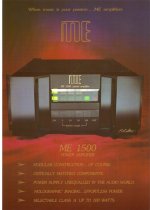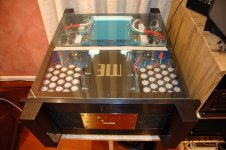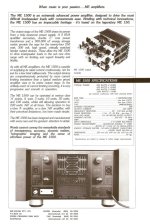The one with a liner power supply was SE-R1 made-to-order...
https://www.eeworldonline.com/the-final-frontier-class-d-and-gan-take-on-hifi-audio/
... further down that article, there's (an exaggerated??) GaN vs MOSFET transient pulse/switching handling diagram...
https://www.eeworldonline.com/the-final-frontier-class-d-and-gan-take-on-hifi-audio/
... further down that article, there's (an exaggerated??) GaN vs MOSFET transient pulse/switching handling diagram...
I saw that and they dont say a thing about why there's a difference. Is it the intrinsic characteristics, like the device geometry, or that non-existent Qrr have something to do the difference in the ringing shown. I guess they leave one to assume so -... further down that article, there's (an exaggerated??) GaN vs MOSFET transient pulse/switching handling diagram...
I don't know if you are wrong, but I know these amps don't sound so good at all. This one and the smaller brother that is. The couple of times I auditioned them I was not impressed. I really wanted to like them but nope.I haven't posted here in about 20 years, but this got me to, lol.
Earlier in this thread someone asked "why doesn't anyone do feed forward" - i.e., have the amp "know" the impedance of the speaker ahead of time and then adjust the FR of the signal ahead of time, making feedback less important.
What I'm wondering, though, is if the Technics "digital amps" aren't already doing exactly that via their "LAPC" feature. The new SU-GX70 integrated amp costs almost exactly the same as the GAN-1 + Node stack (about $2000). As far as I can tell it doesn't have feedback, only feedforward via "LAPC". It sends test tones to the speaker during setup:
https://us.technics.com/products/network-audio-amplifier-su-gx70
Indeed, as far as I can tell only their $10,000 flagship has feedback, via something they call ADCT. https://us.technics.com/products/stereo-integrated-amplifier-su-r1000
Am I wrong about the Technics amps?
EDIT: Here is a video of the LAPC system playing test tones:
We must have diametrically opposed tastes. 🤣 I am in the 1930 WE+Silbatone camp, you are in the classD+B&W.
We must have diametrically opposed tastes. 🤣 I am in the 1930 WE+Silbatone camp, you are in the classD+B&W.
Ya got that right, that's a very "colorful" combination. I can understand the attraction, way back I had SE 805 monoblocks with Klipchorns.
And I'm not in the Class-D camp, I use them with their drawbacks because they are the closest amps I have found that get near to the sound of big high biased Class-A push pull BJT enviroment killing amps, like this magic sounding amp (again with no global feedback).
Attachments
Last edited:
"And I'm not in the Class-D camp, I use them with their drawbacks because they are the closest amps I have found that get near to the sound of big high biased Class-A push pull BJT enviroment killing amps, like this magic sounding amp (again with no global feedback)."
George, which class D amp do you personally use? The GAN-1?
George, which class D amp do you personally use? The GAN-1?
Na not "yet" the the GaN's don't get quite enough current or wattage from them at the present, maybe in the future.George, which class D amp do you personally use? The GAN-1?
I use my own Hypex NC500 made monoblocks, each with massive linear +-85V power supply, without any buffers direct in (because I have enough output from my MSB DAC with volume control bal output).
The NC500's didn't have enough current for me for my last speakers, (2ohm 87dB) like my above ME amps into them had without a sweat, so I sold the speakers and replaced them with some 91db ones that don't go much below 3ohms. These Hypex NC500 work quite nicely into them, still not quite as good sound as the ME sounds into them, but at least I'm not killing the planet.
Cheers George
Last edited:
we can still be friends... 😉Ya got that right, that's a very "colorful" combination. I can understand the attraction, way back I had SE 805 monoblocks with Klipchorns.
It is a dang shame about limited current capability into difficult loads from GaN and Hypex/ICE. I have a Gan and ICE 1200 amp sitting on my floor, and I have been eyeing some inefficient, difficult-to-driver speakers and shaking my head..Na not "yet" the the GaN's don't get quite enough current or wattage from them at the present, maybe in the future.
I use my own Hypex NC500 made monoblocks, each with massive linear +-85V power supply, without any buffers direct in (because I have enough output from my MSB DAC with volume control bal output).
The NC500's didn't have enough current for me for my last speakers, (2ohm 87dB) like my above ME amps into them had without a sweat, so I sold the speakers and replaced them with some 91db ones that don't go much below 3ohms. These Hypex NC500 work quite nicely into them, still not quite as good sound as the ME sounds into them, but at least I'm not killing the planet.
Cheers George
It's not just GaN or Hypex/ etc, it's Mosfets in general even in linear complimentry push pull amps. They just can't cut it into the real difficult to drive speakers like the "better" complimentary BJT power house amps can, into speakers like Wilson Alexia, with their .9ohm <100hz in the bass where you relly need big current without amp breaking into a sweat.difficult-to-driver speakers and shaking my head..
That's why you see the Grypnon's, Krell's, D'Agostio's etc etc are still staying with linear BJT Class-A/B amps for the higher end of the market, I'm sure they would go over to Class-D if there was a way of using BJT output devices without any draw backs in them.
Cheers George
Last edited:
Didn't say I own 801's they were a mates, not my kind of sound, and the Technics amps did sound better than other amps into them, my preference is for my old speakers Martin Logan Monoliths 3 but with Neolith panels and ACI SV12 bass drivers(<130hz) in place of the ML's Emminence bass drivers, Class-D's just don't cut the mustard into these either, only the ME above did, that's way they got sold too.Liking B&W 801 says a lot about a persons subjective preference.
Cheers!
Last edited:
Now we're talking! Yes, it's hard for anyone with good ears, or any ears, to like B&W! 😉 I consider them among the small group of large audio companies responsible for the demise of 2 channel audio in the 90s.
Didn't say I hated them, just not for me, like horns aren't either.Now we're talking! Yes, it's hard for anyone with good ears, or any ears, to like B&W! 😉 I consider them among the small group of large audio companies responsible for the demise of 2 channel audio in the 90s.
I dont like their sound, but their technical innovations make them avesome candidates for modifications. Im think matrix and 80x types.
Cheers!
Cheers!
It's now possible to merge those 2 'worlds' by tailoring the distortion profile of GaN Fet Class D in accordance with the results of psychoacoustic research by Bell Labs and RCA.I am in the 1930 WE+Silbatone camp, you are in the classD+B&W.
Some literature:
Seems they neglect to mention the load dependent nature of the open loop amp in their analysis...
Some literature:
Until recently, in order to achieve high‐quality sound from an audio amplifier thou-
sands of dollars would have had to be spent on a large, heavy, power‐hungry amplifier
built with a class A amplifier topology.
Okay, given that the word "recently" is subjective, a little history lesson:
There are plenty of manufactures able to hit Class-A or Class-AB noise and distortion levels for over 2 decades now with Class-D power amplifiers.
But even just about 10 years from now, those performances have been improved.
Hypex NCore amplifiers started somewhere around 2011-2012 or so;
https://www.diyaudio.com/community/threads/hypex-ncore.190434/
This article was written in 2019/2020 (copyright says 2020, but pdf creation date is 2019), so Purify Eigentakt amplifiers were also already just about available.
There are a few more examples, but these are the most well known ones.
They don't say a word about ANY of these other amplifiers, only mention dead-time and dismiss all other factors that are very important to Class-D power amplifiers.
Some extremely important ones like the inductor (which can REALLY ruin your distortion if you pick the wrong one) as well as feedback topology and/or switching frequency.
https://www.ti.com/lit/pdf/sloa242
(page 7)
Yet, in figure 12.9 they show a THD+N plot that is barely any better than any super standard TPA325x amplifier (without PFFB even).
As well as what @cab already mentioned about load dependency (and all the issues with higher frequency peaking that go along with it)
Most of those solutions also don't cost "thousands of dollars".
They also mention the small size as a benefit.
Yet, the board size they show can easily be done withe regular MOSFETs
Much smaller if you just use an ASIC.
(I have done single channel 1kW amplifiers on 50x100mm PCB's myself and quite a few dual channel boards with lower power)
Even a composite amplifier won't cost you that much.
sorry, but bad written article in my opinion 👎
Really makes you wonder if the authors are aware of the industry or maybe just deliberately leave things out?
- Status
- Not open for further replies.
- Home
- Amplifiers
- Class D
- Peachtree new GaN-1 all "Digital Amplifier" the future?? (and it's not Class-D)


